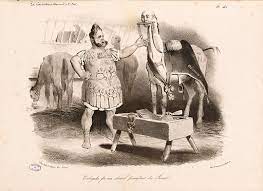It Is Not Unusual For Royalty To Cherish Furry Friends

Queen Elizabeth had a special place in her heart for Corgis, a breed that remained with her throughout her long lifetime.
October 4, 2022
At Queen Elizabeth II’s funeral on September 19, the late queen’s two corgis and pony stood beside her coffin to bid her one final farewell. While the queen was known for her love of dogs and horses, other royals have kept their own companions in their time as leaders.
In 1110, King Henry I of England had walls built in his palace in Woodstock to enclose his fascinating collection of animals. Henry, the son of William the Conquerer, had effectively created England’s first zoo. Some of his animals included lions, tigers, lynxes, camels, owls, and porcupines, most of which were gifted to him by other foreign royals. The collection of animals was moved to the Tower of London in 1235, and stayed in that location for 600 years. Some of the cages are still present today, and are clearly too small for the animals to have lived good lives. King Henry’s wide array of animals he kept as pets was the backbone for the modern zoos we know today.

Emperor Caligula, who was known as the “Mad Emperor” (Ruled from 37-41 A.D.), was anything but a people person. This was so much so that he believed that his favorite racehorse, Incitatus, was a better candidate for government office than any humans. Caligula was determined to make the horse a consular of the Roman senate, and mocked the treasonous aristocrats who were currently seated in the Senate. Incitatus was often seen wearing a jeweled collar and rich purple blankets, and lived in a marble stall and ivory manger. The emperor’s horse was living a more luxurious life than most most Roman citizens. It was even said that Incitatus the horse was given his own palace, and attended Caligula’s lavish banquets. Emperor Caligula’s love for his horse was certainly stronger than his love for humans.
Indian ruler Muhammad Mahabat Khan, who ruled from 1911-1947, owned hundreds of dogs and truly treated them like royalty. He allegedly dressed the dogs in evening suits for special occasions and had them driven around in rickshaws (two or three-wheeled passenger carts) around the busy areas in town. Each dog was entitled to their own room, servants, and even their own telephones where they could bark “orders”. In 1922, Khan decided to throw a wedding for one of his dogs named Roshanara, who was married to a golden retriever named Bobby. The day of the wedding was declared a state holiday, and set off a trend for the rulers of Northern India to throw weddings for their own dogs. The wedding ceremony was incredibly extravagant and cost nearly $1 million in today’s money. When Roshanara and Bobby passed away, Khan declared a state mourning.
Finally, Queen Elizabeth II did not only own companions with fur, but one with scales as well. During World War II, Lord Luis Mountbatten surprised his cousins, then Princesses Elizabeth and Margaret, with a large chameleon. Elizabeth was so thrilled with her new pet and even made it a home out of a box. Margaret reportedly placed the chameleon on the cover of a book and watched it turn read. The royal nanny, Marion Crawford, was disgusted by the beady-eyes creature, but the young girls insisted on keeping it. Elizabeth would carry the chameleon all around the palace, and was devastated when it eventually passed. She insisted on giving it a proper burial, and a gatekeeper made a small white coffin to lay the royal pet to rest.

























